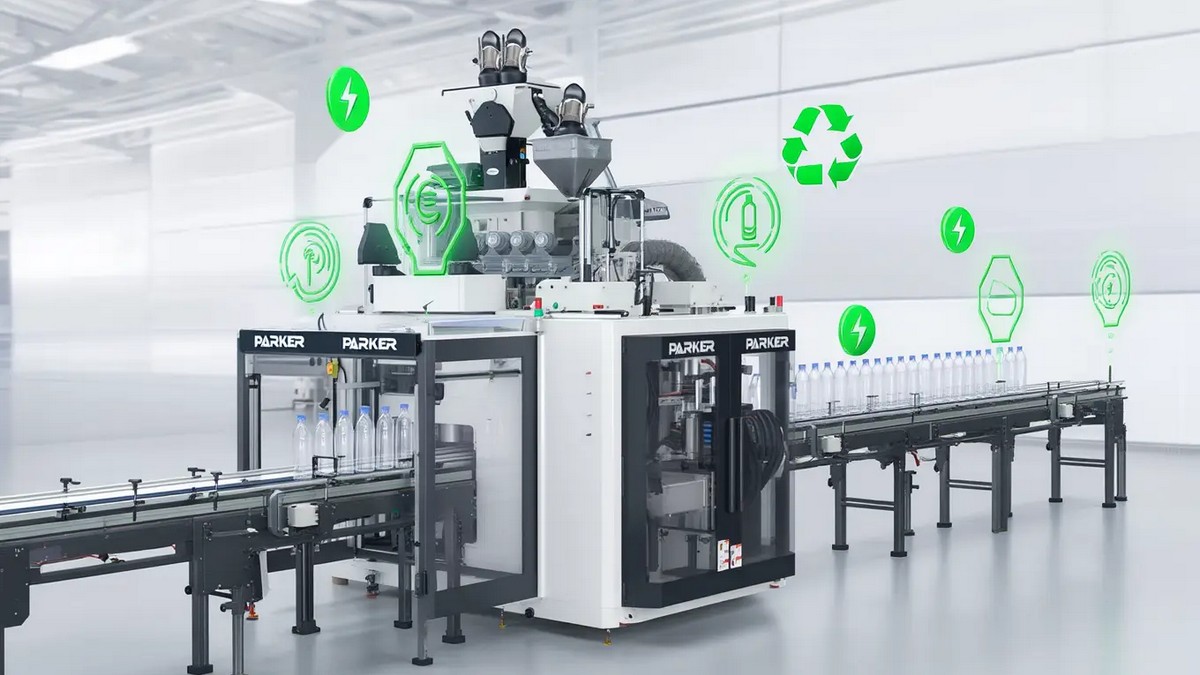Digital innovation is rapidly helping transform modern industries. Healthcare providers in hospitals and healthcare systems are applying these tools to promote public health, reduce costs, and improve experiences.
What is the Medical Internet of Things?
Medical IoT refers to the growing number of IoT applications in the medical industry. These have resulted in a wide range of IoT devices and applications designed for healthcare needs and settings, such as sensors and applications for remote healthcare monitoring, telehealth consultation, and delivery. Medical IoT also leverages artificial intelligence and machine learning technologies to support life-changing improvements to traditional medical devices.
Why Choose Medical IoT?
Medical IoT can help improve patient outcomes through real-time patient monitoring, advanced diagnostics, robotic surgery, and more. Medical IoT is also important in the increasingly decentralized nature of health and healthcare, eliminating the need for office visits through telemedicine and related technological advancements. For healthcare providers, the IoT in healthcare opens new opportunities to improve patient care and manage the inherent complexities of healthcare operations by increasing automation, security, and other technological advantages.
Internet Medical Industry Development:
Internet technology is entering the medical industry strongly, and traditional pharmaceutical companies are also following suit. The medical industry is committed to using the Internet, big data, and cloud computing technology, combined with medical-grade smart wearable technology to reorganize medical resources, rebuild the medical diagnosis and treatment service process, and develop new health management systems, so that more people can share efficient, high-quality, and inclusive diagnosis and treatment services.
Overview of the Internet Healthcare Industry - Taking China as an Example:
In the past two years, pharmaceutical e-commerce, including online sales of prescription drugs, has been increasing. During the COVID-19 epidemic last year, the National Medical Insurance Administration of China opened the door to medical insurance payment for Internet medical care and Internet medicine, allowing medical insurance to pay for chronic diseases and other follow-up visits, and open online sales. With the ability to ensure the authenticity and reliability of electronic prescription sources, the door has been opened to the online sales of prescription drugs which are not under special state management.
By facilitating medical insurance payment processes, online sales of prescription drugs via licensed Internet hospitals will be made possible, speeding up the development of internet medical care. The intensive introduction of Internet medical policies has improved the basic closed-loop policy system for medicine and medical insurance.
China's Internet medical industry began to sprout and develop around 2011. It experienced a rapid rise in 2015, but saw a relative decline from 2016 to 2018, and then reached a new peak in 2019. Nowadays, with the transformation of social patterns, the medical industry will continue to undergo digital transformation, and Internet medical care will optimize the development of the medical industry over the next ten years.
China's medical and health industry is an important part of the national economy. China's medical expenditure in 2019 was RMB 6.5 trillion and is expected to reach RMB 11.6 trillion RMB by 2025, and 17.6 trillion by 2030, with a CAGR of 9.5% from 2019 to 2030. In 2019, in the US, Germany, and Japan, health care expenditures accounted for 17.1%, 14.2%, and 11.7% of GDP respectively. At the same time, China's healthcare expenditure accounted for only 6.6% of GDP, showing a lot of room for improvement in the future.
Pain Points in the Development of China's Medical Industry:
-
Uneven distribution of high-quality medical resources:
The unbalanced distribution of medical resources is a serious problem China has faced for a long time. High-quality medical resources are mainly concentrated in eastern coastal cities and economically developed large and medium-sized cities, especially tertiary hospitals, while the rural primary medical service capacity is still lagging. Due to the lack of effective management of patients' medical treatment and the limitations of traditional medical service supply methods, the high difficulty and high cost of medical treatment have become structural drawbacks that have hindered the development of China's medical and health industry for a long time. As the primary medical system and hierarchical diagnosis and treatment system have not been perfected, patients are mainly concentrated in large medical institutions such as tertiary hospitals.
-
Lack of long-term active management of the rapidly growing number of chronically ill patients:
Affected by unhealthy living habits and environmental changes, the number of chronic disease patients in China continues to increase. In 2019, there were more than 300 million patients in China with chronic diseases. Due to the low cure rate of chronic diseases, patients need long-term, continuous treatment and disease management services. There is currently a lack of an active and digital based chronic disease management system in China. Patients' condition records are incomplete, monitoring is not strict, and there is a lack of timely, appropriate, and accurate inspection and guidance for patients' medication and lifestyle. Repeated visits to the doctor result in high treatment costs, poor efficacy, and reduced quality of life. The huge group of chronically ill patients generates a heavy burden of medical expenditure.
-
Single payment method:
The public health insurance fund managed by the National Medical Insurance Administration is the largest single-payer of China's healthcare spending, accounting for more than 31% of China's healthcare spending in 2019. In 2019, more than 1.3 billion people in China were enrolled in public health insurance, accounting for more than 95% of the total population.
The revenue of the public health insurance fund in 2019 was about 2.4 trillion yuan, and the expenditure was about 2.1 trillion yuan. As China's population continues to age, the pressure on public health insurance funds is increasing. Without effective fund management and a diversified payment structure, public health insurance spending will continue to grow faster than its income. At the same time, China's commercial health insurance industry is still at an early stage of development with a low penetration rate. China's per capita commercial health insurance premiums are significantly lower than the world average.
In 2019, China's commercial health insurance accounted for about 4% of total health care expenditures, compared with about 31% in the United States. The integration of public health insurance and commercial health insurance has been slow to develop, and barriers to entry are high. Therefore, it is necessary to further enrich innovative medical insurance products, promote commercial health insurance products, and increase the awareness of commercial health insurance products other than public medical insurance.
The Driving Factors of Internet Medical Development:
-
Technological development and upgrading of medical equipment and supplies promotes the Internalization of the whole industry:
With the improvement of technical infrastructure, information technology is further integrated with the traditional medical industry, driving the innovation, and upgrading of products and services in the digital medical service industry. This upgrade benefits from the accelerated release of users' demand for high-quality medical services.
Through the application of information technology, hospitals or doctors of different levels can communicate and cooperate smoothly, and patients can obtain high-quality medical services across regions. With the increasing popularity of the Internet and increasing health awareness, digital medical services are highly recognized and used by more and more users, and have become main driving forces for the rapid growth of the digital medical service industry.
-
Favorable policies promote the Internalization of the medical and health industry:
China has attached great importance to improving the operational efficiency of the medical and health industry through Internet-based means. In recent years, China's government has issued several policies to promote the digitization of the industry, implement Internet hospital standards, open online payment of public medical insurance, and support the development of various forms of Internet + medical health services and products.
-
The epidemic has prompted industry reforms:
During the COVID-19 period, the acceptance of Internet medical services by patients and doctors has increased significantly, and the supply and demand for Internet medical services have increased significantly. As a supplement to traditional medical services, medical care, and treatment in China, the Internet medical service platform has been widely recognized by the Chinese government and medical service users. Internet medical services have also fully demonstrated their reliability and convenience.
Healthcare Transformation Trends:
Healthcare providers now have more technology options to support evidence-based care and can leverage new interactive systems to improve the care experience for patients and providers. The technology is part of the evolution of the healthcare industry towards better cross-discipline integration and collaboration, and value-based care.
The future of healthcare will focus on taking the patient-centered care model to the next level. Healthcare delivery is moving from a volume-based or fee-for-service approach to value-based care, that is, offering incentives for quality healthcare outcomes. Healthcare organizations need better data management, further interoperability, and better outcomes measurement methods to reduce healthcare costs and identify opportunities for improvement while creating an organization that delivers a high-quality experience to clients.
The healthcare sector faces a variety of challenges (including tight regulation, privacy concerns, and escalating costs), but healthcare professionals have seen how the benefits of the digital revolution can have a profound impact on the healthcare industry.
-
Clinical Information Technology (IT): Clinical Information Technology (IT) is moving towards greater centralization and connectivity. IT infrastructures will help strengthen data management, interoperability, and integration of clinical systems.
-
Clinical Settings: Increasing interconnectivity of clinical settings will help healthcare professionals work faster and more efficiently, allowing them to spend more time with patients, and reduce healthcare costs.








.jpg)
.jpg)
.jpg)

.jpg)

點-m-90454917_m.jpg)